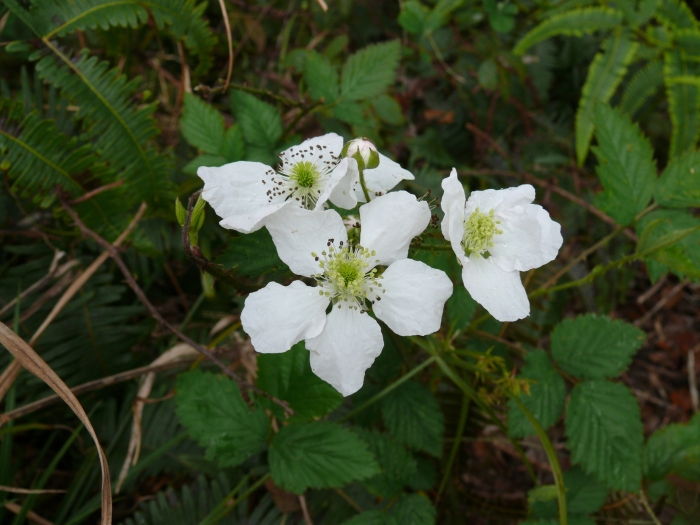Sawtooth Blackberry
(Rubus argutus)
Sawtooth Blackberry (Rubus argutus)
/
/

Robert Webster
CC BY-SA 4.0
Image By:
Robert Webster
Recorded By:
Copyright:
CC BY-SA 4.0
Copyright Notice:
Photo by: Robert Webster | License Type: CC BY-SA 4.0 | License URL: http://creativecommons.org/licenses/by-sa/4.0/ | Rights Holder: Robert Webster | Publisher: iNaturalist | Date Created: 2008-03-17T11:38:55-07:00 |

























Estimated Native Range
Summary
Rubus argutus, commonly known as Sawtooth blackberry, is a deciduous shrub native to thickets, clearings, and forest edges in the eastern and south-central United States. It can grow up to 7 feet high and is characterized by its thorny stems, palmate leaves, and white flowers that bloom from late spring to early summer. The flowers are moderately showy and give way to black compound drupes, which are commonly known as blackberries and ripen in late summer.
Sawtooth blackberry is valued for its edible fruit, which can be used in culinary applications such as jams, jellies, and pies. It is also appreciated for its wildlife value, as the berries provide food for birds and mammals, and the dense shrubs offer shelter. In cultivation, it prefers full sun to part shade, moist to well-drained soils, and is tolerant of a range of soil types. While it can be used for naturalistic plantings or as a fruiting hedge, caution is advised due to its potential invasiveness and aggressive growth. Regular pruning is necessary to keep it in check, and it can be susceptible to fungal diseases such as rust and anthracnose.CC BY-SA 4.0
Sawtooth blackberry is valued for its edible fruit, which can be used in culinary applications such as jams, jellies, and pies. It is also appreciated for its wildlife value, as the berries provide food for birds and mammals, and the dense shrubs offer shelter. In cultivation, it prefers full sun to part shade, moist to well-drained soils, and is tolerant of a range of soil types. While it can be used for naturalistic plantings or as a fruiting hedge, caution is advised due to its potential invasiveness and aggressive growth. Regular pruning is necessary to keep it in check, and it can be susceptible to fungal diseases such as rust and anthracnose.CC BY-SA 4.0
Plant Description
- Plant Type: Shrub
- Height: 6.5-8.2 feet
- Width: 3-5 feet
- Growth Rate: Rapid
- Flower Color: White
- Flowering Season: Spring, Summer
- Leaf Retention: Deciduous
Growth Requirements
- Sun: Full Sun, Part Shade
- Water: Medium
- Drainage: Fast, Medium, Slow
Common Uses
Bird Garden, Edible*Disclaimer: Easyscape's listed plant edibility is for informational use. Always verify the safety and proper identification of any plant before consumption.
Natural Habitat
Native to thickets, clearings, and forest edges in the eastern and south-central United States
Other Names
Common Names: Sawtooth Blackberry, Tall Blackberry, Southern Blackberry
Scientific Names: , Rubus argutus, Rubus abundiflorus, Rubus americanus, Rubus betulifolius, Rubus floridensis, Rubus floridus, Rubus incisifrons, Rubus koehnei, Rubus louisianus
GBIF Accepted Name: